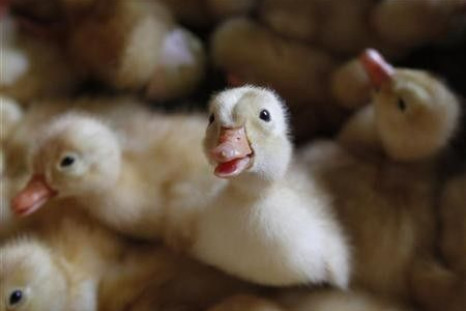Bird Flu Redux? What We Know About H7N9
The H7N9 strain that's sickened at least nine in China has not yet been documented passing from human to human.
U.S. Panel Defends Call to Censor Bird Flu Studies
A potentially deadlier form of the bird flu virus poses one of the gravest known threats to humans and justifies an unprecedented call to censor the research that produced it, a top U.S. biosecurity official said on Tuesday.
Annual Flu Vaccines Could Leave People Vulnerable to Novel Pandemics: Study
According to a new research paper published in the November Journal of Virology, vaccinating children annually against influenza virus could interfere with their development of cross-reactive killer T cells to flu viruses.
Mysterious Strain of H1N1 Infected Children at State Fair: Public Health Alert
There is not enough information to determine whether flu could become pandemic
Second Case of Swine Flu Reported: Is an Outbreak up Next?
This could be an outbreak of a new Swine Flu strain, with the health officials announcing second case of swine-flu striking in Pennsylvania followed by Indiana case.
Swine flu reaches to 209 countries with 14,142 deaths
The World Health Organization (WHO) said on Friday that more than 209 countries have reported confirmed A (H1N1) virus, including at least 14,142 deaths.
U.S. swine flu cases rise, more expected
More than 40 people in five states have been sickened by new strain of swine flu that doctors fear may cause a pandemic, U.S. officials said on Monday, promising more cases to come.




